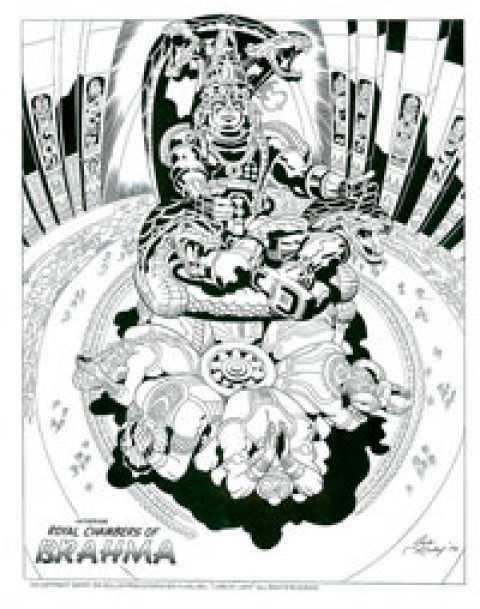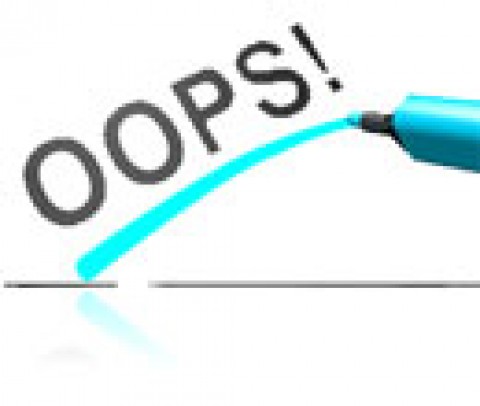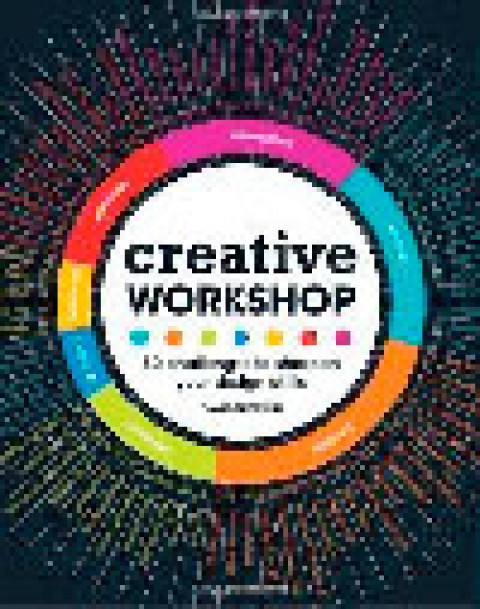
Hindsight is a beautiful thing, as we all know. It’s easy to look back and say this was a brilliant idea, that was a great influence, here’s when the trend started …
But predicting the future is a much harder task (just ask the political polsters), but we all need to have some idea where the new year will take us and how we can plan to meet the challenges and opportunities.
As four heads are better than one, I thought I’d talk to some friends and colleagues in the industry and let you know what we think will happen in the paper, design and printing industry, and how you can use our collective crystal balls to your advantage in 2012.
Let’s start with a quick glance back.
The year that was 2011
Many people in the design and printing industry will sum up 2011 this way: consolidation, consolidation, rationalization … and consolidation.
“There is no doubt that we have fewer players in the paper field,” agrees Thomas Wright, director of Design at Neenah Paper. “But as the dust settles, the brands offered are tried and true, strong and complete paper choices for designers.”
Paper and print volumes continued to follow the economy, with an overall downward trend in traditional print as marketers shifted resources to digital and on-line media.
“By contrast, e-commerce-enabled digital print continues to grow dramatically,” observed Jane Monast, director of Communications at Mohawk Fine Papers. “Examples of that would be on-line providers of photo books and cards. We’re happy to see that the digital on-line space is evolving and demanding higher quality papers. Blurb, Pinhole Press, Minted, and Moo are interesting examples of this trend.”
2011 also saw a surge of “new” technologies allowing for more customized or innovative ways to combine print and on line media.
“QR and AR codes gained an amazing popularity in 2011,” says Daniel Dejan, North American ETC Print and Creative Manager at Sappi Fine Paper North America. “Everybody talked about integrated marketing, but few people took it to its full potential.”
You know what he means: too many variable data pieces that write your name on the wall or in the sand, but ignore other opportunities to customize the piece to your specific needs and interests. QR codes that have no big juicy call to action and simply lead you to a company’s website are another prime example.
There’s no doubt that we have to adapt how we print and design – how we utilize our creativity and technology to build better brands, convey more effective messages, create greater change for good, increase our bottom lines, (insert your goal here).
And this dear readers, is the basis for the trends in 2012.
1. YOU need to be in touch with what’s happening
Overall, lower paper demand is leading to dramatic industry consolidation. Paper products and brands will be changing or going away entirely. At the same time, as many of you already feel, the industry has cut back on sales support.
“Online research tools are more robust than ever, and because they are easily updated, they can keep up with a rapidly changing market. PaperSpecs and mill websites should be your first stop and will help you keep abreast of changes,” urges Jane Monast.
And changes there will be. Don’t just fall in love with one paper or finish, all of my sources agree. Some paper lines you have become accustomed to might disappear or be consolidated.
If your project is part of a campaign, and you need the assurance that a specific paper is available for the long run, be up front and ask your supplier if this paper will be around for “x” amount of time, and vet the mill for financial strength urges a merchant friend.
“At no time is it more important for designers (and printers) to be members of PaperSpecs,” advises Dejan. “You need to be in touch with what is going on. What papers are available, which ones have been discontinued.”
From PaperSpecs (your tried and trusted paper resource ;-)) to mill websites, there is ample information and resources available for you. From eco-calculators for the web, or your mobile device to paper math calculators, mills offer great resources and apps for your color and paper needs.
“As a designer, a printer or a paper mill, we should embrace technology,” says Wright. “Technology tools just make sense.”
2. Green is not gone
So what happened to all the talk about green? Sustainable paper and printing options continue to be important, it’s just that they’ve become the price of entry for print. What seemed to be new and cutting edge a few years ago is now an expected reality.
“Make sure that you use environmentally responsible papers, that you work from a clean mailing list, and that you produce things of real value to the recipient,” suggests Monast.
3. Paper prices will fall. No, they’ll rise. Well, maybe.
In the last few weeks, I’ve read numerous articles that argue each side of this discussion. The truth of the matter is, yes, theoretically, the prices for paper should come down, as demand is decreasing and the industry is rightsizing. But here’s the big but:
“A large part of the production of paper depends on variables that we do not have any control over,” clarifies Dejan, “like energy, pulp and oil.”
And then of course there are natural disasters, which we surely cannot control and that affect the price of paper and a large number of other goods. A tsunami in Japan and vital electronic parts cannot be delivered. An earthquake in Chile delays shipping and distribution of pulp and raw materials from their sea ports for months setting off a global domino effect.
Up or down? Whichever way paper prices go, you and I won’t have too much influence on this so let’s focus on the things we can control and be sure to test the effectiveness of our designs.
4. Digital, digital, digital
Learn as much as you can about print/digital integration. As touched on in our quick look back, we ‘re not utilizing our creativity and technology to its full potential. The tools are available, and they can be extremely powerful.
“Variable data gives you the ability to deliver beautifully produced, relevant communications that have a high ROI,” says Monast. “These days, customers expect that businesses will not waste their time.
“Within the next two to three years, more than half of the print purchased will be digital,” agrees Dejan. “Whether it’s toner or other disruptive technology such as inkjet technology.”
5. Your printer relationship
There’s no doubt that a large number of printers have been bought out or gone out of business. But don’t despair.
Thanks to modern technology, you have the opportunity to sit in the middle of nowhere and get something extraordinary printed by someone who really understands you, even if this printer is on the other side of the country.
“Use your social media friends to find resources that will increase the value of your piece,” suggests Wright. “Thanks to Facebook, LinkedIn and the likes, you have access to an incredible network of knowledge and referrals around the country … around the world if need be.”
Wright draws this analogy, “A designer is like the principal conductor. And as such, designers have the opportunity to put together their own orchestra with outstanding performers – printers, merchants and other vendors – an exceptional orchestra that will add support and value to their offering and their projects.”
But, you have to do your homework. Check out connections and referrals, interview the right people, and build close relationships with those printers and vendors that understand and support you.
6. Your paper relationship
For a designer, paper and print have become just two elements of a radically complex communications landscape.
“There was a time when designers studied papers and knew their attributes,” muses Dejan. “I am saddened by the fact that we do not see this level of knowledge and commitment anymore.”
Designers today are juggling a staggering number of new technologies – many of them just invented within the last few years. They may be designing a signage program one minute, a business card the next, an iPad app, and then a website.
To survive, they must blog, tweet post and link in.
“Few people have the luxury to obsess over paper choices,” says Monast. “And with the scale of merchant and mill consolidations, a carefully considered choice may be unavailable. For this reason, we’ve seen designers and print buyers turn to their printers for more support. Make sure your printer has your priorities in mind when recommending paper.”
7. The flight to human qualities
“We have and probably will continue to see two extremes at work,” explains Wright. “On one end of the spectrum we see short-run digital print increasing; on the other hand, we have the sexy, truly crafted pieces and the love for letterpress.”
I’ve been saying it for months and am pleased that our experts agree with me: High touch is a great antidote to high tech.
“After cutting as many corners and budgets as they possibly could, companies are now eager to once again instill a sense of brand,” says Dejan.
Think big if you want to make a big impression. Think about super-heavy weight papers, letterpress printing, colored papers, textures, and shine as ways to connect with your audience.
Monast sums it up this way, “The paradox of our time is that the more time people spend on line, the more they value tactile, tangible experiences that are so effectively delivered by print.”
So, given these trends, what would I do if I were you? Try something new (digital printing or incorporating an effective QR code), talk to knowledgeable people and stay informed, utilize resources that save time, and most importantly … listen to my clients to figure out how I can help them solve their problems.
——————–
Seeing designers worldwide struggle to stay current with new papers and paper trends inspired Sabine Lenz to create PaperSpecs, an independent and comprehensive Web-based paper selection tool and weekly e-newsletter. Growing up in Germany, she started her design career in Frankfurt, before moving on to Australia and the United States. Lenz worked on design projects ranging from corporate identities to major road shows and product launches. From start-ups to Fortune 500 companies, her list of clients included Oracle, Sun Microsystems, Deutsche Bank, IBM and KPMG. Lenz is a noted speaker and author on paper issues and educational topics related to the paper industry.
Copyright 2012 PaperSpecs.com.












